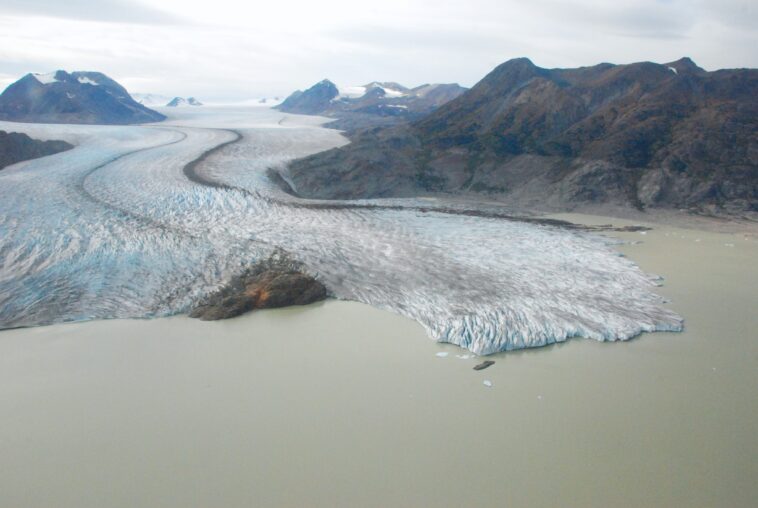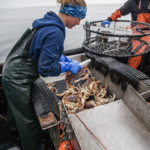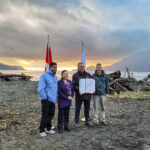Melting glaciers are quickly changing the landscape and watersheds in Northeastern BC, creating a huge dilemma over how that land is used.
New watersheds could become rich new habitats for animals from moose to spawning salmon–and support BC’s commercial salmon fishery and ecology-based economy.
Or, rich mineral deposits that are now accessible could be used for new gold mines – mainly for jewelry.
“Stewardship of glacierized landscapes, and other ecosystems that are being transformed by climate change, urgently need forward-looking science and environmental policy.”
Moore et al.
BC has a choice to make, one that will depend on governments, First Nations, and a recent court ruling. The choice is urgent, says a new study led by Simon Fraser University researchers.
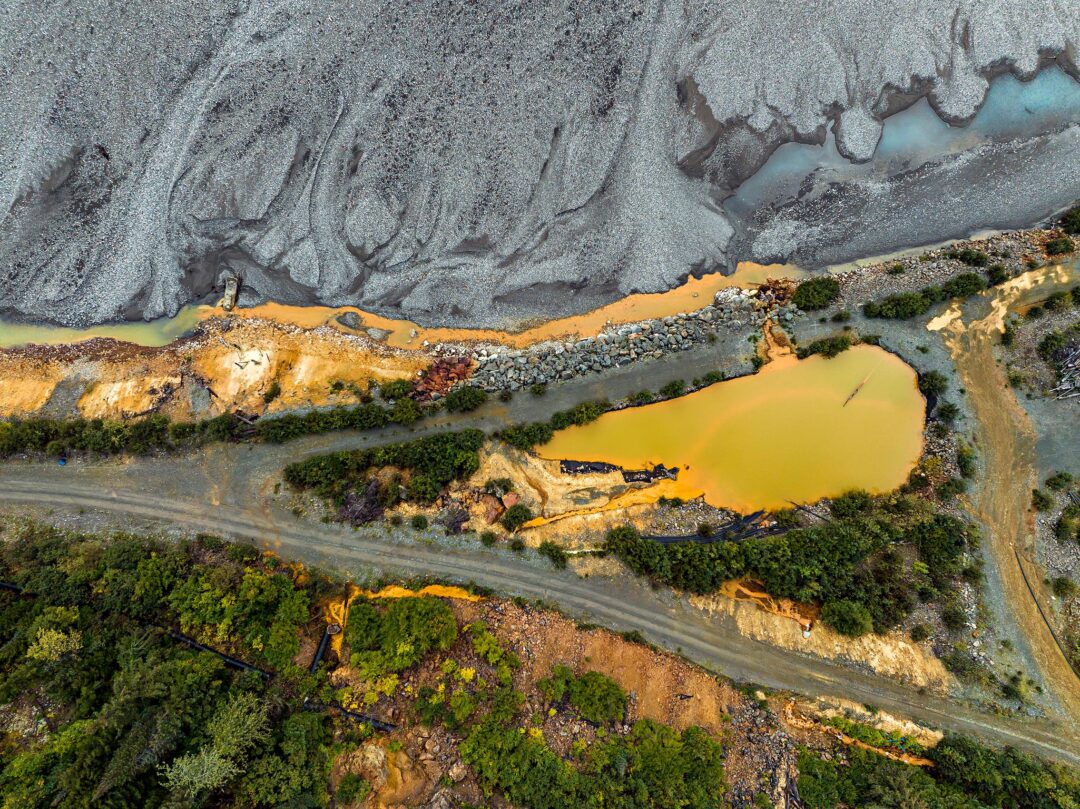
“Glacier retreat is creating thousands of kilometres of new rivers that salmon are finding,” said SFU in a statement. “The mining industry is competing with salmon for rivers created by disappearing glaciers.”
“Stewardship of glacierized landscapes, and other ecosystems that are being transformed by climate change, urgently need forward-looking science and environmental policy,” notes the study published in the peer-reviewed journal Science.
“This is an emerging environmental issue,” said Professor Jonathan Moore, head of the Salmon Watersheds Lab. He led the study co-authored by researchers with Gitanyow First Nation Hereditary Chiefs, the University of Montana Flathead Lake Biological Station, and Taku River Tlingit First Nation.
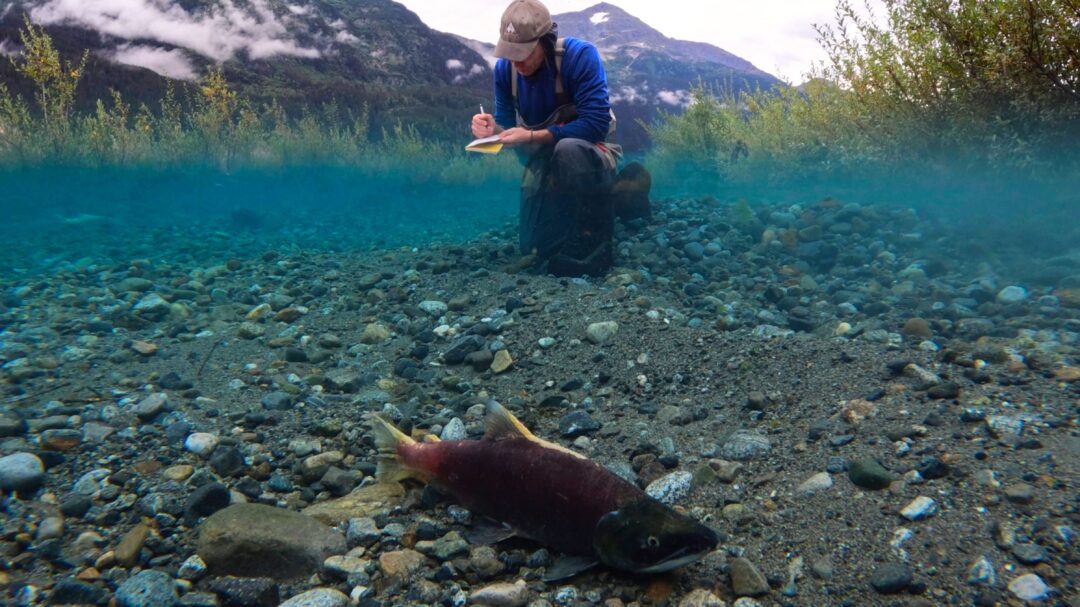
Mineral claims in BC can be automatically and cheaply staked almost everywhere in the province through a simple online system. But that system is changing as fast as the glaciers are melting because of a new BC Supreme Court ruling.
This fall, the Gitxaała and Ehattesaht First Nations won their suit against the province and mining companies over mineral claims in their territories made using the online system.
“The Mineral Tenure Act not only violates Indigenous rights but also undermines stewardship of ecosystems for future generations.”
Tara Marsden, Strategic Advisor and Chair of Indigenous Planning, Simon Fraser University
The BC Supreme Court ruled that the system “causes adverse impacts upon areas of significant cultural and spiritual importance to the petitioners; and the rights of the petitioners to own, and achieve the financial benefit from, the minerals within their asserted territories.”
Justice Alan Ross gave the province 18 months to change the system.
Whether that ruling stands will depend on whether the case is appealed to higher courts.
“These changes can’t come soon enough,” said Tara Marsden, a co-author of the study on glacier melt and salmon habitat. “The Mineral Tenure Act not only violates Indigenous rights but also undermines stewardship of ecosystems for future generations,” said Marsden, who is with the Gitanyow Hereditary Chiefs.
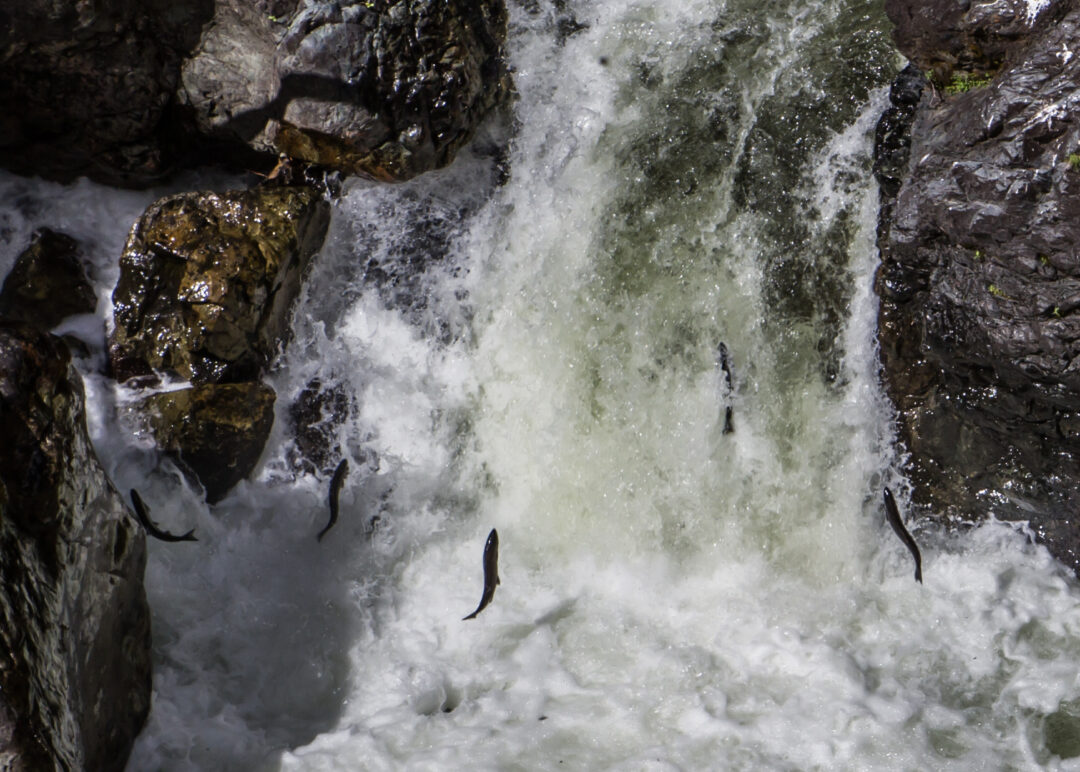
“We are not saying no to industry everywhere; we are saying let’s do this in a good way,” she added. “This is a globally relevant opportunity to get a lot right—Indigenous rights, meaningful protection of biodiversity and ecosystems, and climate resilience.”
The new paper in Science noted that risk assessments and habitat protections under current environmental laws focus on the current values of ecosystems but not their future values.
“Climate change is transforming ecosystems around the world,” said Moore. He said the new study “reveals the need to look carefully at environmental laws and make sure that they not only protect habitats of today, but also the habitats of tomorrow.”


